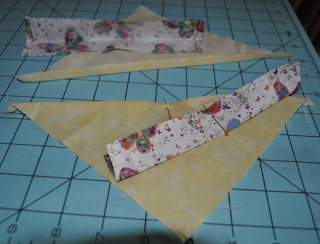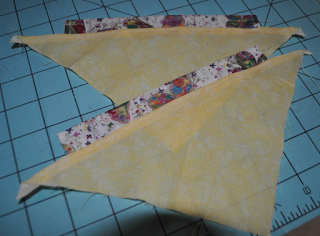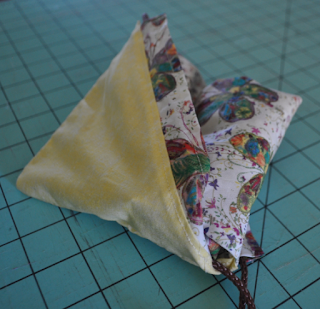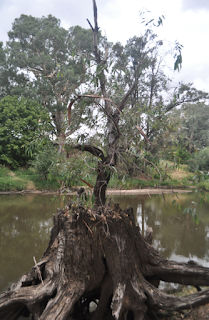Strawberry bag pattern and tutorial
This is how I made my version.
Cutting out the pieces
For the main bag you will need to cut two pieces 14.5 inches wide x 15 inches long (37 cms x 38 cms). For the handles cut two pieces 2.5 inches wide x 16.5 inches long (6 cms x 42 cms). For the casings cut two pieces 7.5 inches x 2 inches (19 cm x 5 cms). From contrasting fabric cut one 7 inch (18 cms) square and then cut this in half diagonally to make two triangles for the pockets.
Make the pocket
Turn the ends of each casing piece in 1/4 inch and sew them down.
Fold them in half and mark the middle with a pin. Fold the longest side of the triangle down 1/4 inch and iron. Then mark the middle of this with a pin. Pin the casing to the long side of the triangle, matching the centre pins.
Sew them together, then sew a line along the casing 1/4 inch from the top.
Sew the bag together
Pin the pockets to the bottom corners of the bag pieces, wrong sides together, making sure that each is on an opposite corner, so that they will meet when you sew the bag sides together. Baste them to the bag close to the bottom and side edges.
Then, right side together, sew the sides and the bottom of the bag together. Overlock the seams to neaten if you like.
Make the handles
Right sides together, fold each handle in half and sew along the long sides.
Turn right side out and iron, so that the seam is in the centre of each handle.
Attach the handles to the bag
Pin the handles to the top of each side of the bag, with each end 3 inches (8 cm) from the side seams. Make sure the handle seam is facing up. Baste the handles to the bag.
Turn the top of the bag over 1/4 inch, including the handles if the turn.
Then turn over again to make a hem and pin and sew around the top.
Finishing off and folding the bag into the pocket
Thread a 25 inch (64 cms) long cord through the casing on the pocket, taking it all the way around both sides of the pocket, then tie the ends together with a knot.
To fold the bag into its pocket, you could simply stuff it in, but I folded the sides in and then rolled it into the pocket.
Pull up the cord, and now we're done!























































